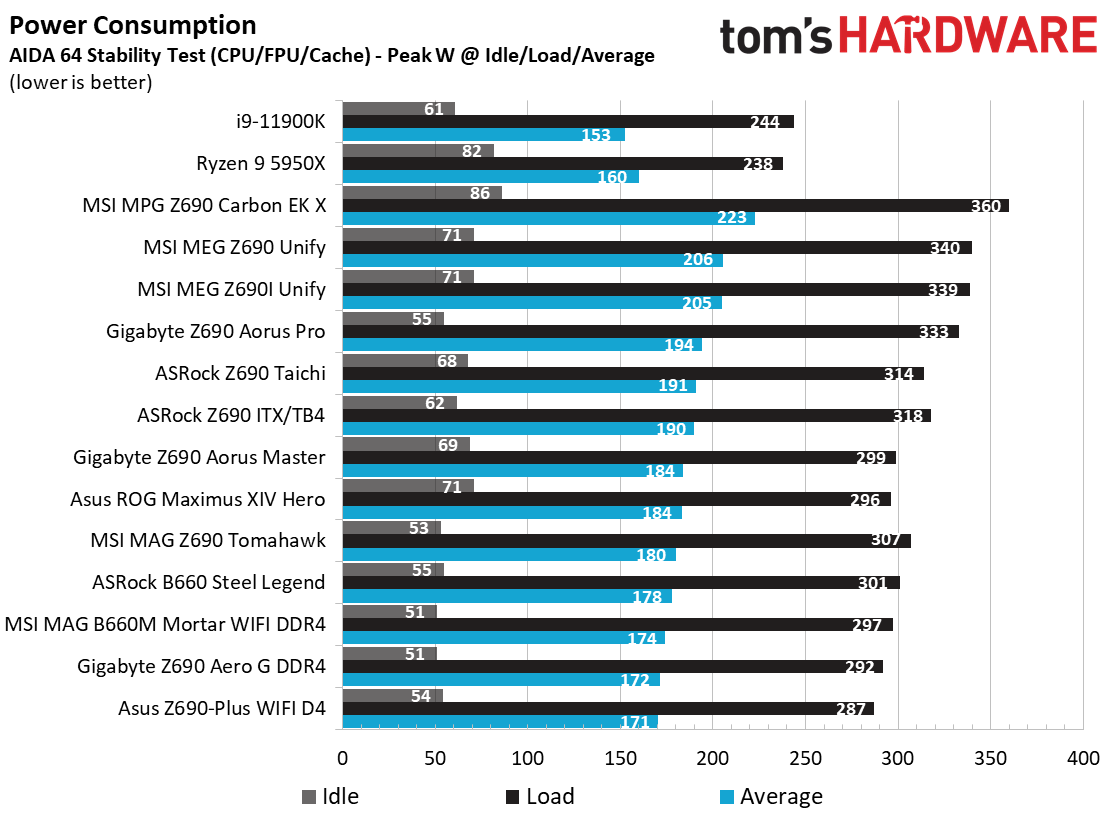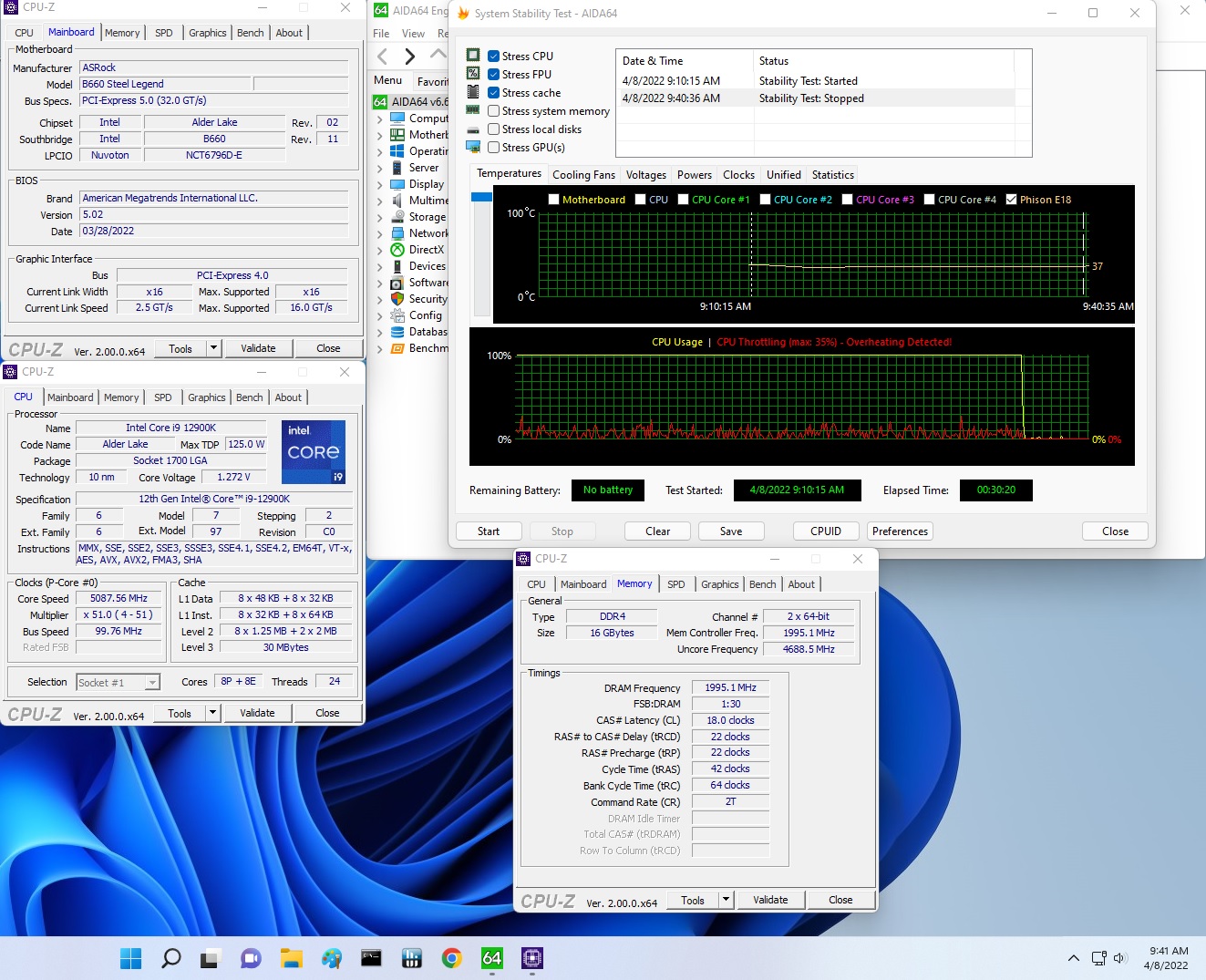Why you can trust Tom's Hardware
Benchmark Results and Final Analysis
Our standard benchmarks and power tests are performed using the CPU’s stock frequencies (including any default boost/turbo), with all power-saving features enabled. We set optimized defaults in the BIOS and the memory by enabling the XMP profile. For this baseline testing, the Windows power scheme is set to Balanced (default), so the PC idles appropriately.
To get the most out of the Intel Alder Lake chips, you need to be on Windows 11 with its updated scheduler. In most cases, Windows 10 performs well. However, some tests (Cinebench R20, Corona and POVRay) take a significant hit. In short, if you’re going with Alder Lake, you must upgrade to Windows 11 for the best results across the board. That may change with patching and updates in the future, though.
Synthetic Benchmarks
Synthetics provide a great way to determine how a board runs, as identical settings should produce similar performance results. Turbo boost wattage and advanced memory timings are places where motherboard makers can still optimize for either stability or performance, though, and those settings can impact some testing.
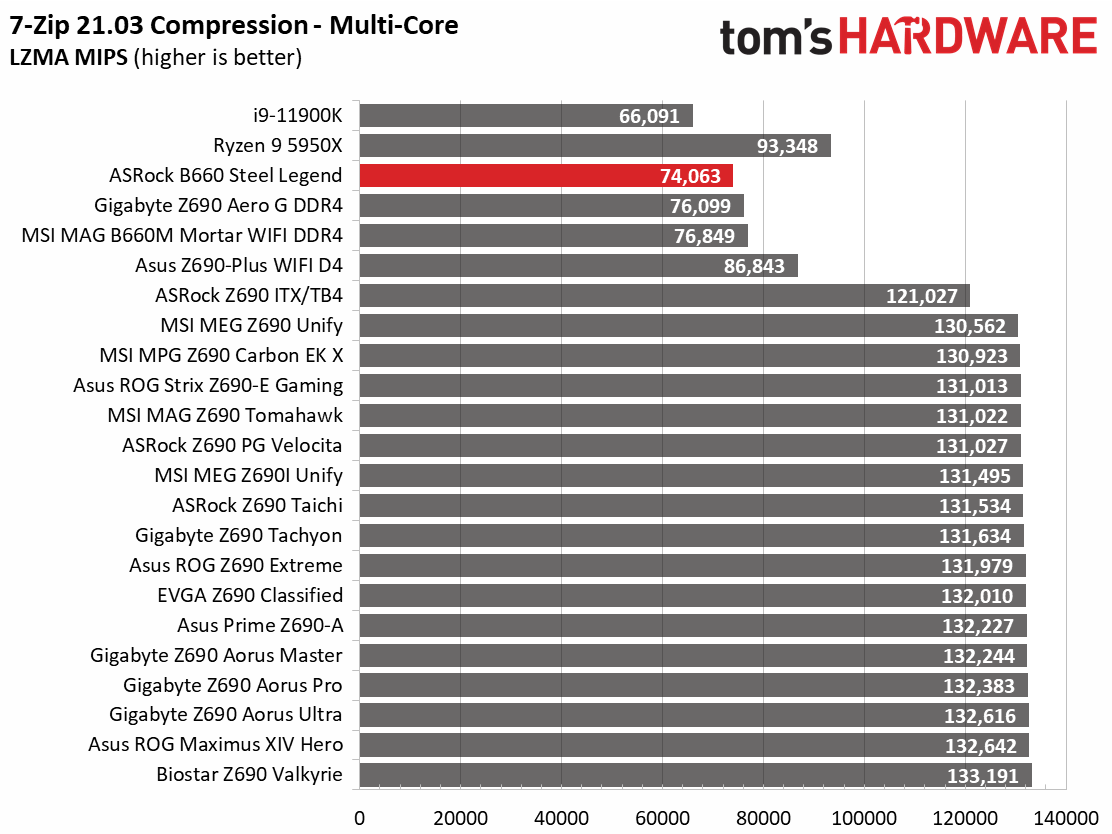


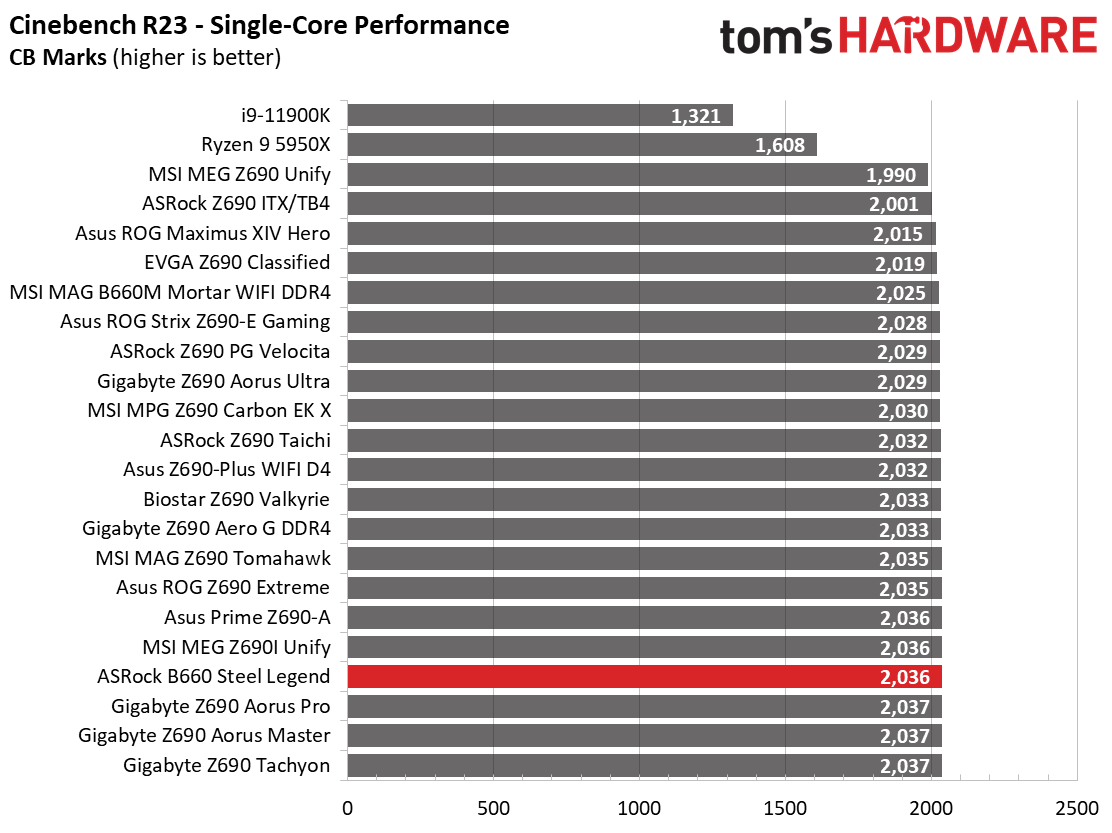


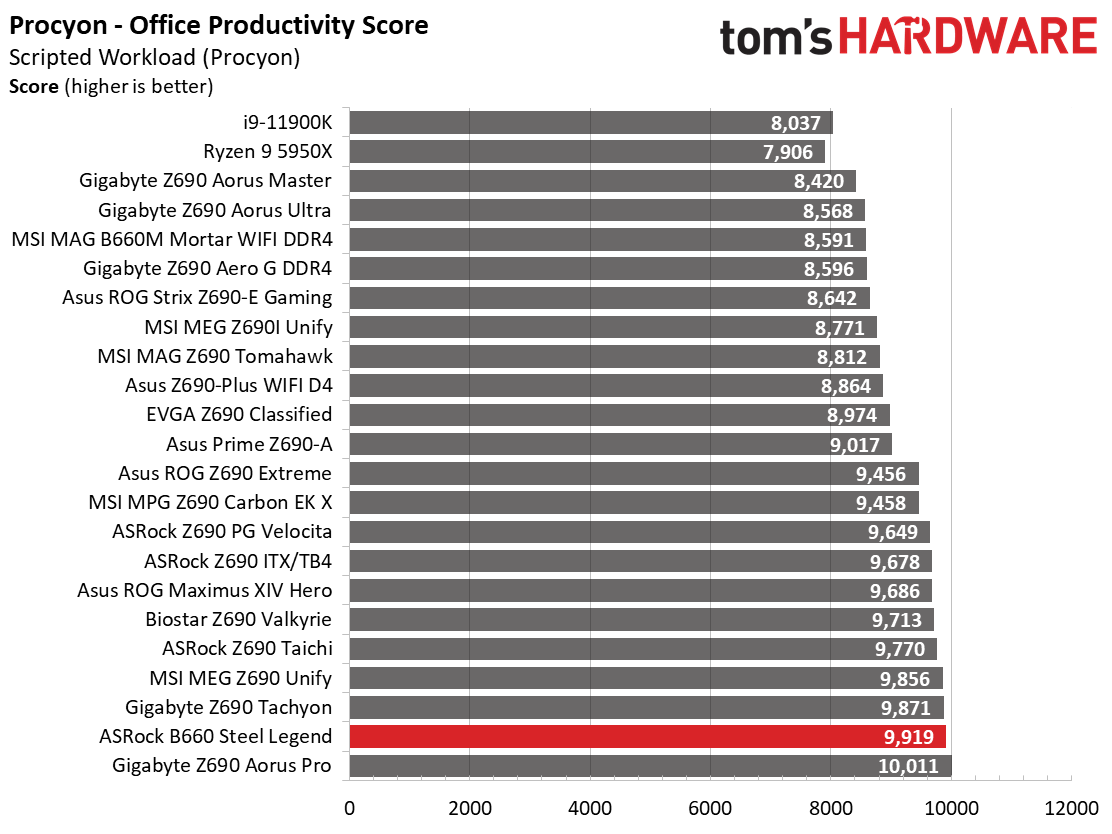
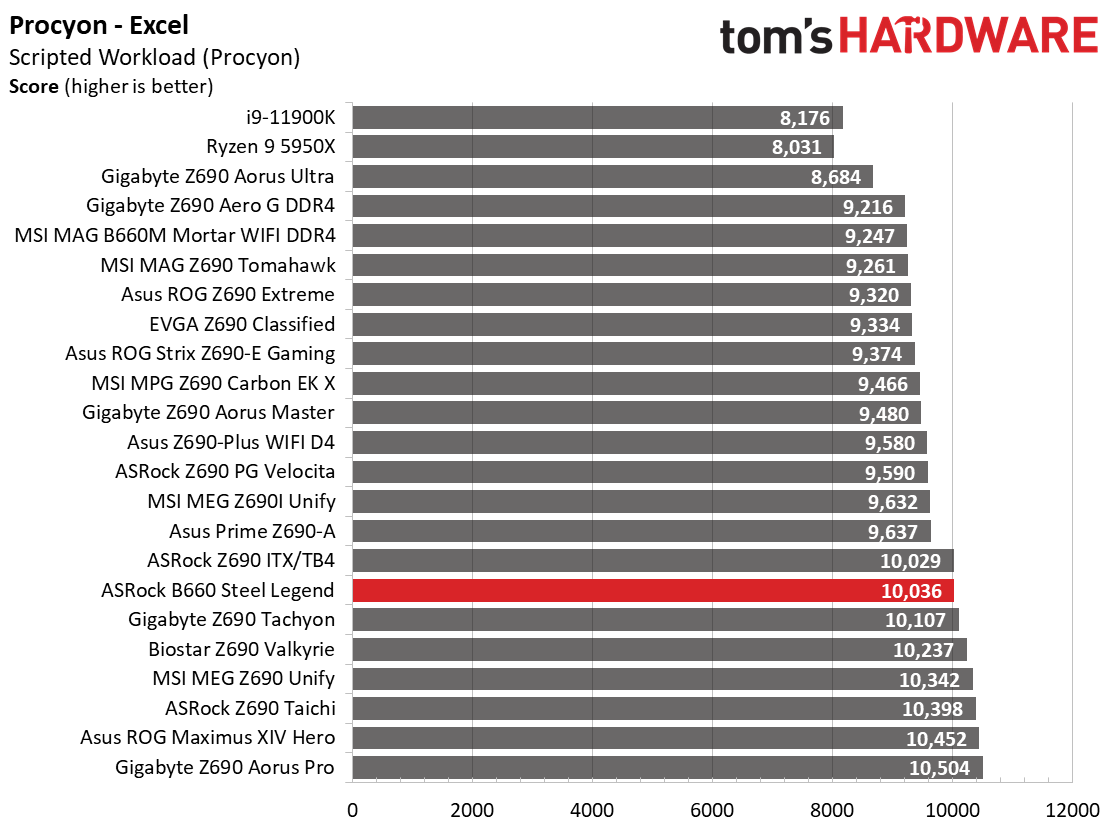
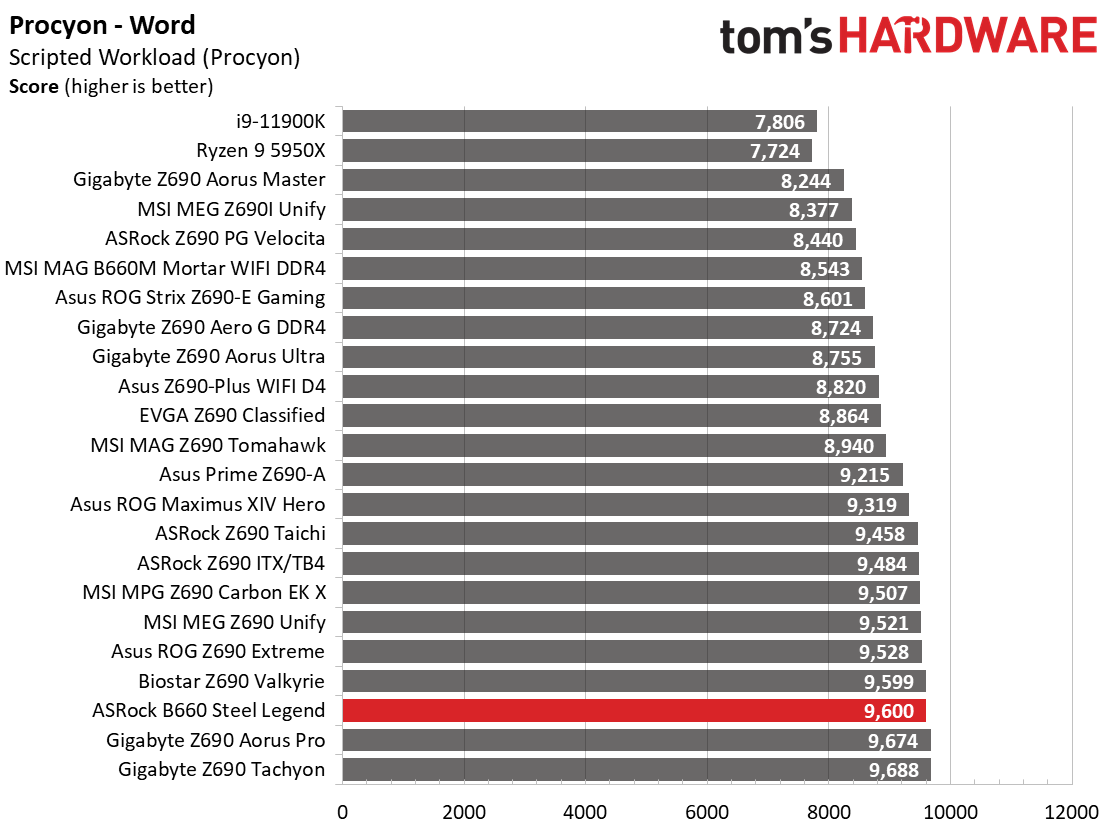
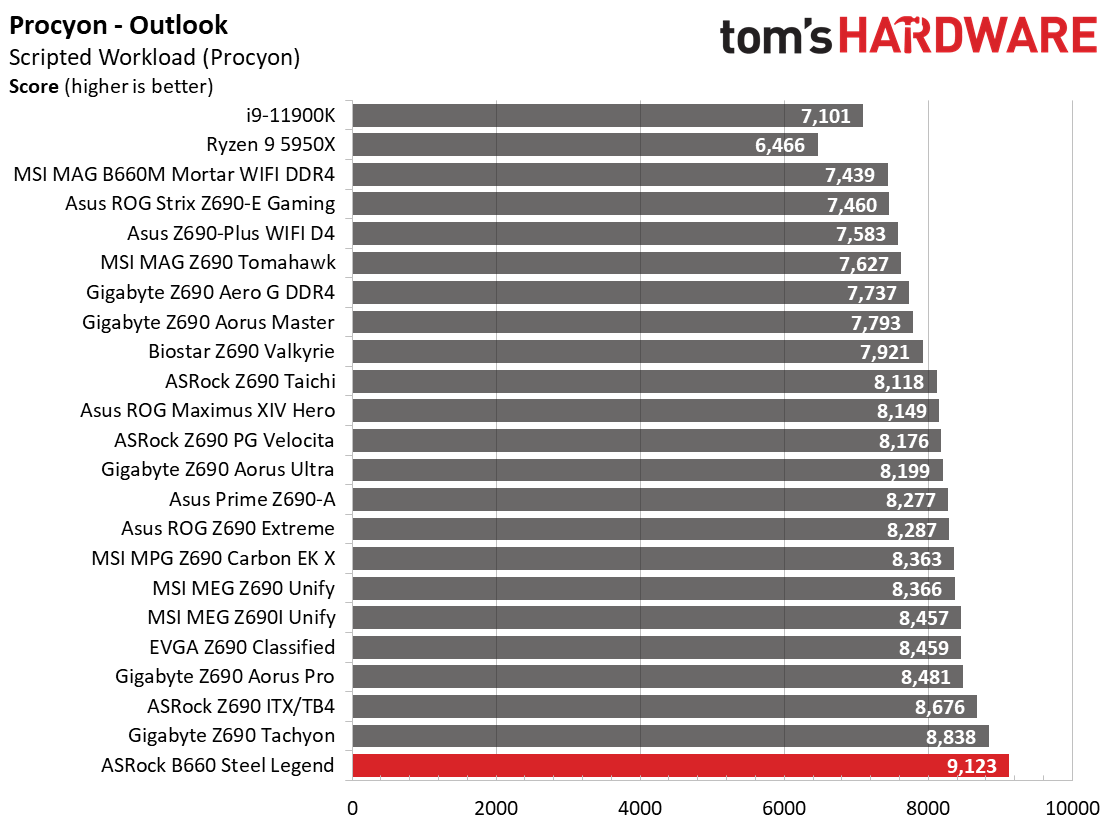



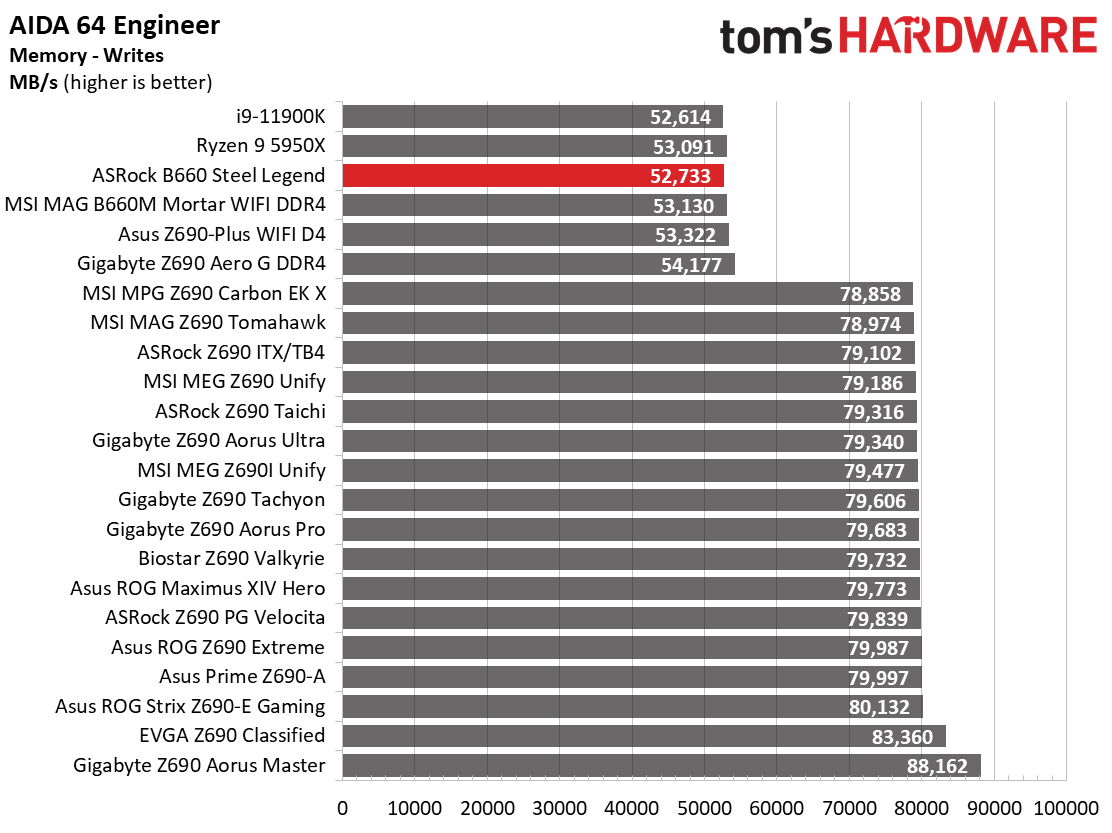

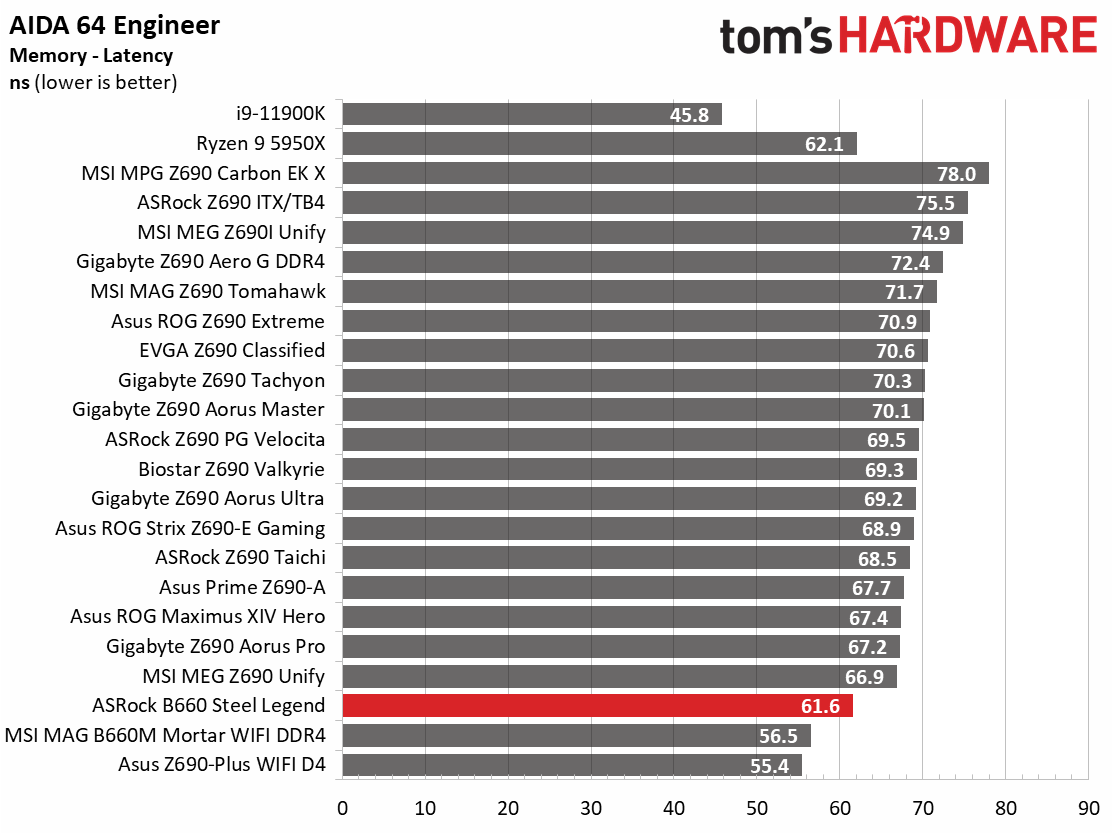
In our synthetic benchmark tests, performance was all over the map with this board, depending on the type of load the benchmark uses. For example, in 7Zip, Cinebench and POV-Ray multi-thread, performance was hampered by thermal throttling of our CPU. Other tests, such as MS Office in Procyon, it’s one of the fastest boards tested. AIDA memory bandwidth tests were slower than the other DDR4 boards, though not by much. If you want the most out of an i9-12900K on this board, you’ll have to make some adjustments to voltage to prevent the thermal throttling we see in some of these heavily multi-threaded tests. But lesser CPUs should perform better out of the box.
Timed Applications
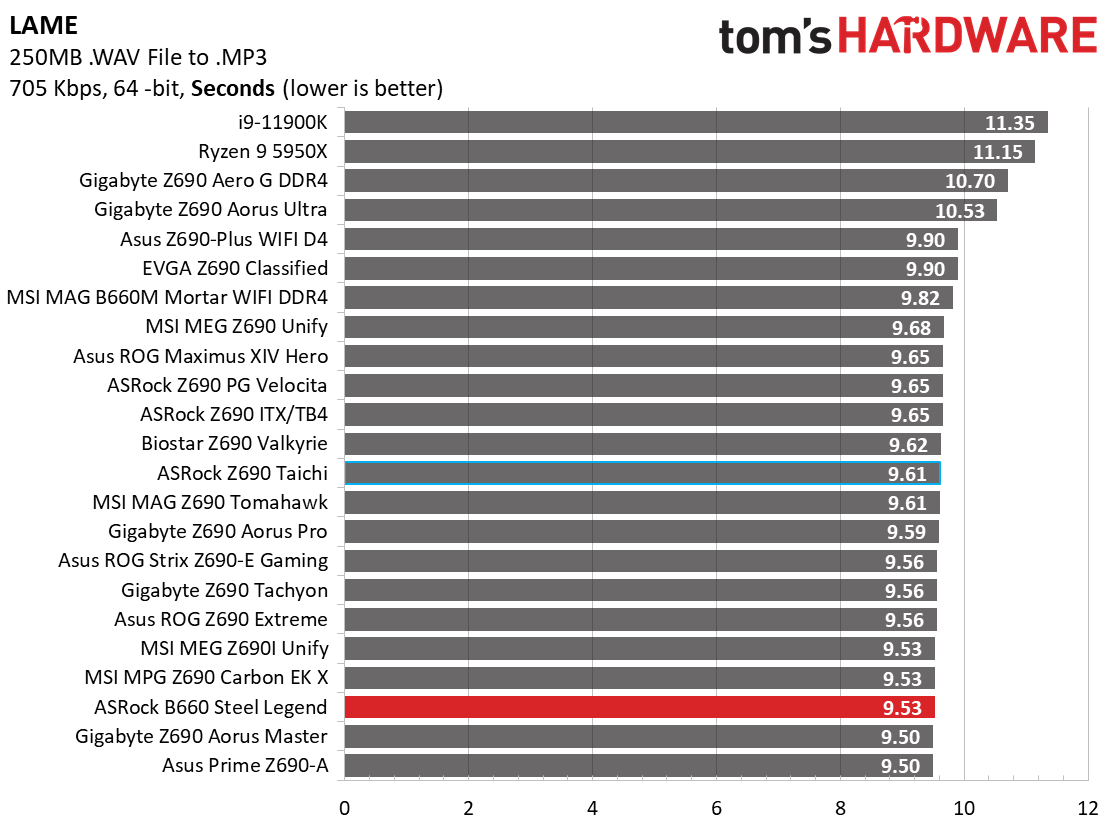

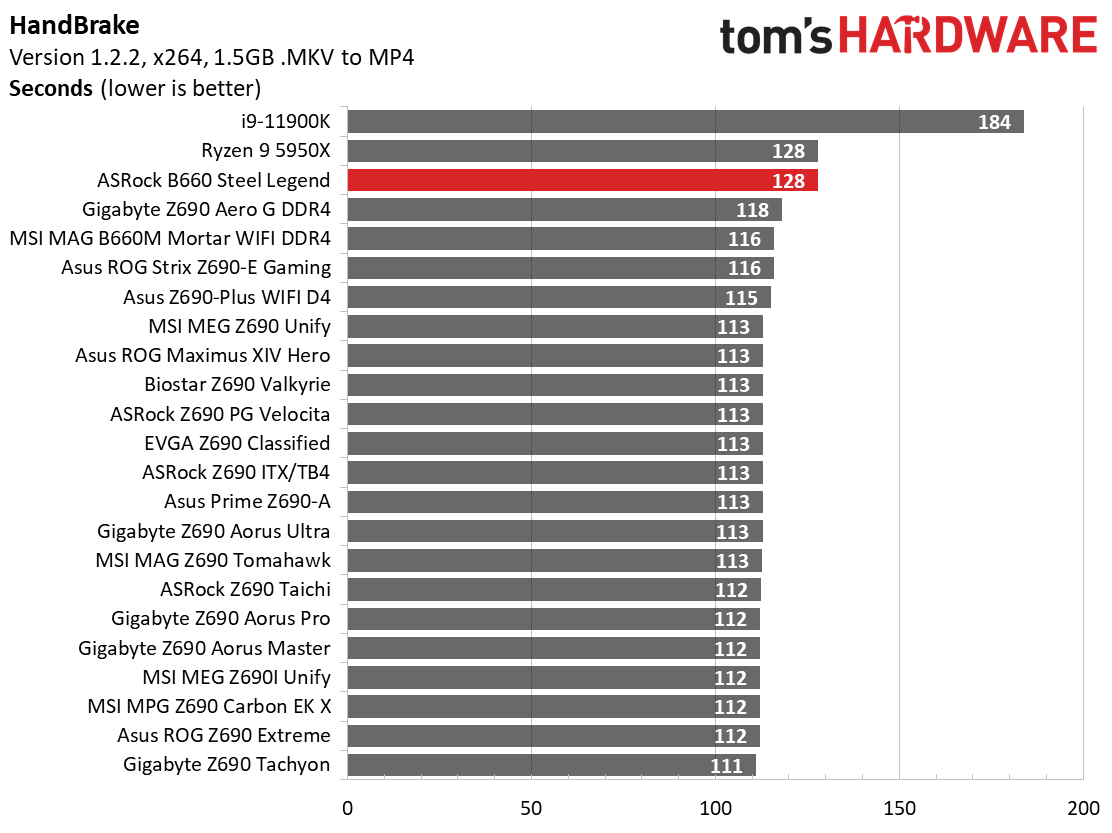
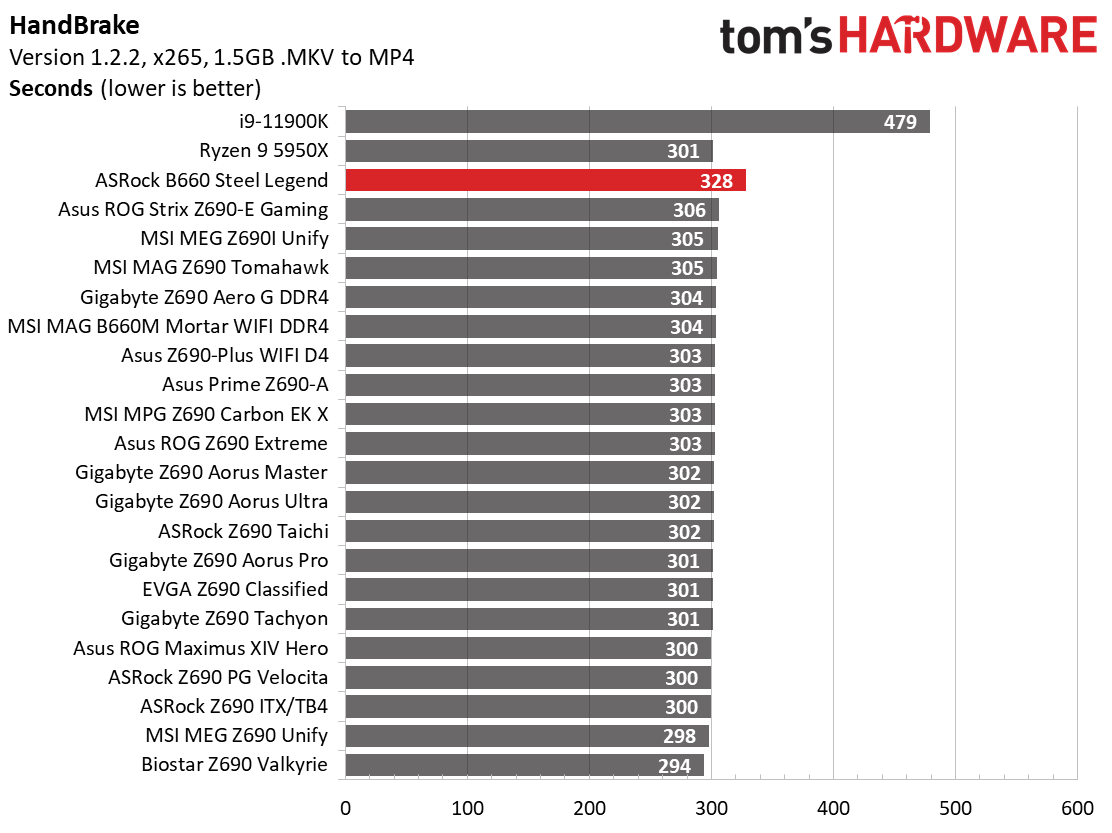
Starting with LAME testing, the Steel Legend was quick here, completing the benchmark in 9.53 seconds, faster than the average. The Corona Ray Tracing benchmark's results were slower than average, finishing in 53 seconds (average is 52 seconds). Handbrake results yield the slowest times we’ve seen out of all the boards we tested so far. Again, the thermal throttling of the CPU is the cause of these significant differences.
3D Games and 3DMark

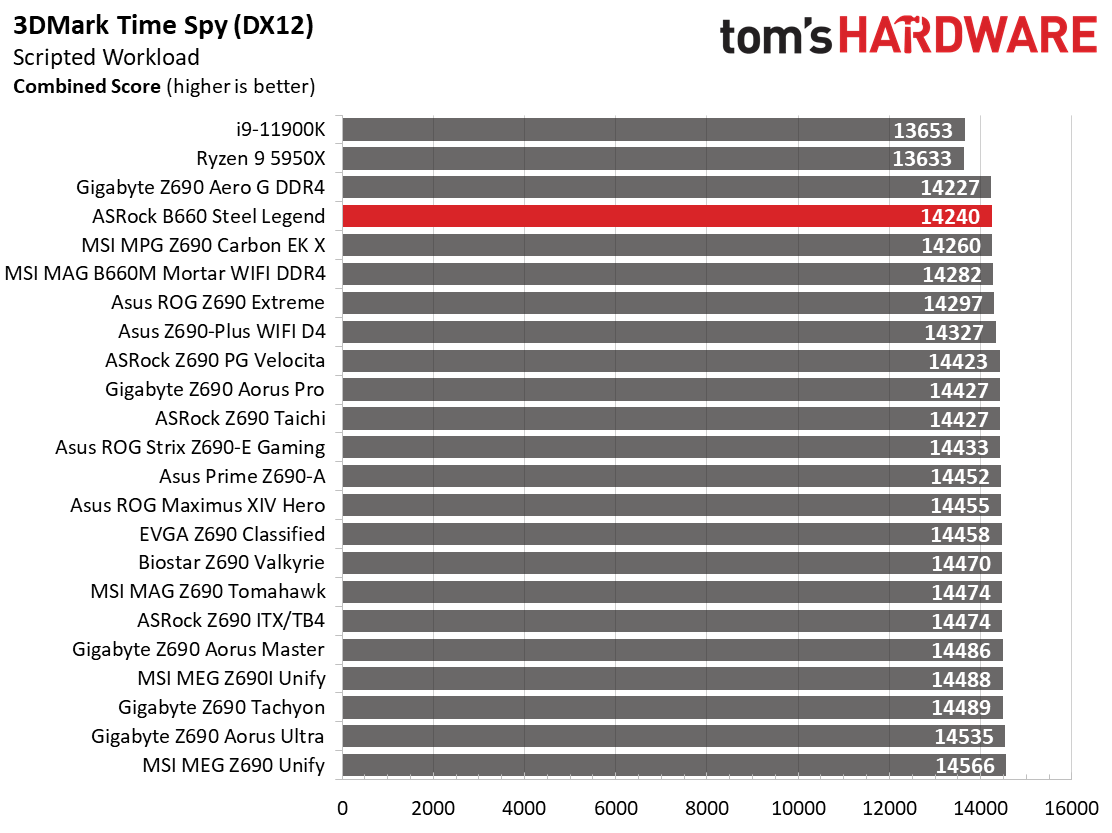

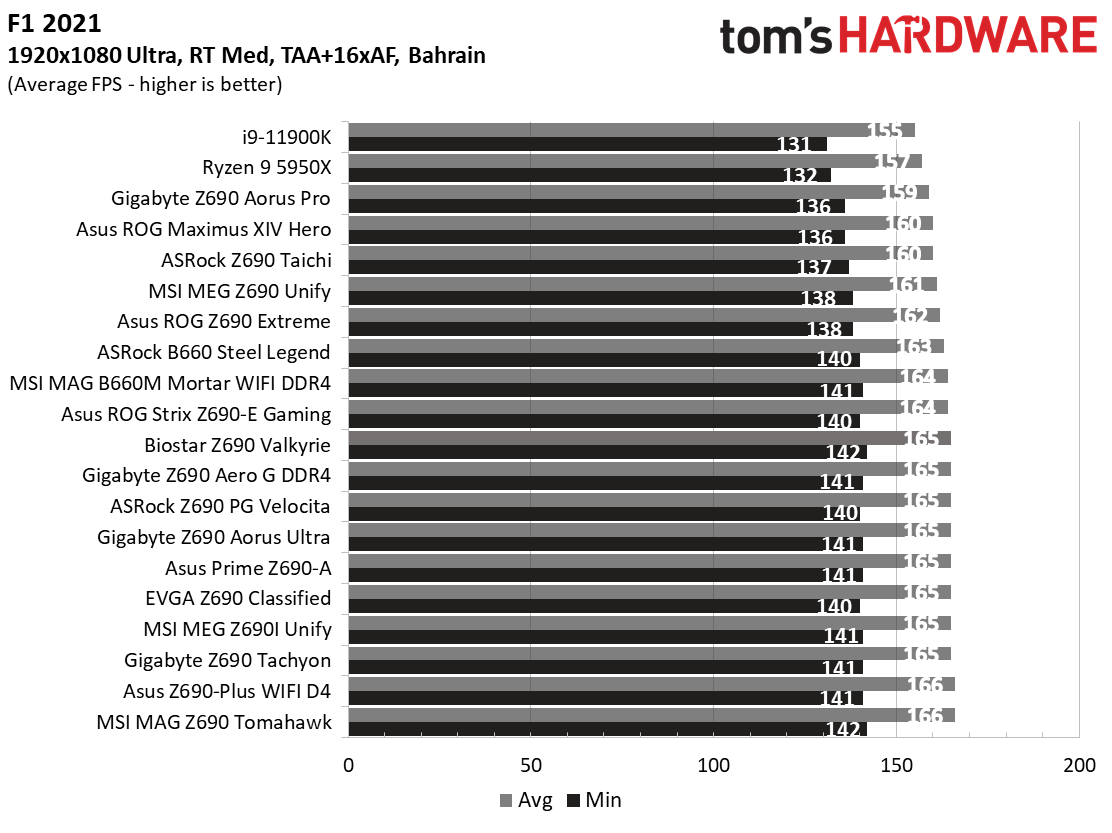
Starting with the launch of the Z690 chipset, we’ve updated our game tests. We’ve updated Far Cry: New Dawn to Far Cry 6 and shifted from F1 2020 to F1 2021. We run the games at 1920x1080 resolution using the Ultra preset (details listed above). As the resolution goes up, the CPU tends to have less impact. The goal with these settings is to determine if there are differences in performance at the most commonly used resolution with settings most people use or at least strive for. We expect the difference between boards in these tests to be minor, with most falling within the margin of error differences. We’ve also added a minimum FPS value, as that can affect your gameplay and immersion experience.
In F1 2021, the Z690 Steel Legend averaged 163 fps with minimums of 140 fps, or right around average. Far Cry 6 was similar but had a lower minimum FPS than most other results (113 fps compared to an average of around 120), while the average was solid at 137 fps.
Get Tom's Hardware's best news and in-depth reviews, straight to your inbox.
In the 3DMark tests, our Steel Legend scored 14,240 on 3DMark Time Spy and 17,024 on Fire Strike Extreme. Time spy was slower than average, while Fire Strike was slightly above average, but the difference between the slowest to fastest results is close to negligible. Overall, this board performs well in games and you won’t miss the frame or or two difference unless you’re paying close attention to benchmarks.
Power Consumption / VRM Temperatures
We used AIDA64’s System Stability Test with Stress CPU, FPU and Cache enabled for power testing, using the peak power consumption value. The wattage reading is from the wall via a Kill-A-Watt meter to capture the entire PC, minus the monitor. The only variable that changes is the motherboard; all other parts are the same.
The Steel Legend sipped on power at idle, using 55W, which places it more on the efficient side of average. Load power use peaked at 301W, an above-average result. But overall, this is one of the more efficient boards we’ve tested, likely thanks in part to the fact that it has fewer features, ports and slots than most of the Alder Lake boards we’ve tested so far.
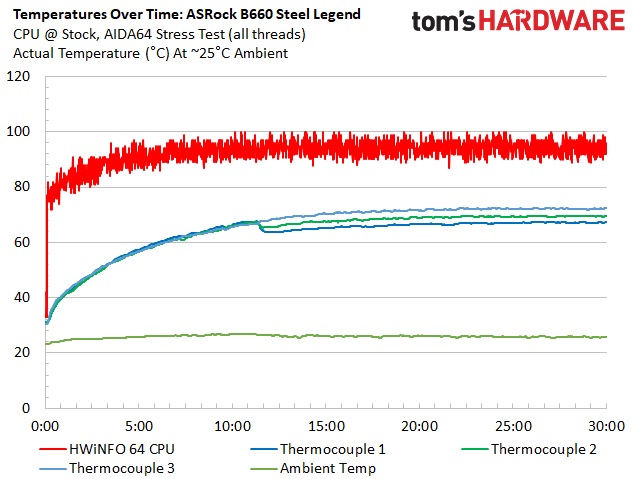

VRM temperatures on the Steel Legend were a bit warm compared to most boards. I can’t say I was surprised considering the paltry power delivery, smaller heatsinks, and the fact we’re using a flagship-class power-hungry processor. That said, temperatures peaked at 70 degrees Celsius which is hot but still well within the operating spec of the 50A Sic654 MOSFETs.
Overclocking
Overclocking the CPU isn’t possible on B660-based chipsets, but the platform does allow for memory speed adjustment. With our DDR4 3600 and DDR4 4000 kits, we simply set XMP, and off we went without a hitch. Surely there’s some headroom left, but I’d imagine people purchasing a budget-class board aren’t looking to buy expensive RAM that’s far outside of the sweet spot (DDR4 3600-400).
Bottom Line
Overall, our budget B660 Steel Legend is a solid board for the price. If you plan on dropping in a flagship-class CPU in, you may need to make some adjustments to Vcore (negative offset, for example) for better results in heavily multi-threaded applications due to an overzealous voltage curve from the BIOS. If your use model doesn’t involve beating on all cores/threads of the CPU, this board was just as fast or faster (Procyon Office) than most other boards in our testing. Hardware-wise, the B660 Steel Legend has all you’re likely to expect from a B660 motherboard. There are three M.2 sockets, six SATA ports, a Key-E M.2 socket to add Wi-Fi, and capable power delivery. For $159.99, it isn’t a bad deal, but there is some competition in this space.
For around the same price, MSI has the B660-A DDR4 ($149.99). Gigabyte offers a B660 Gaming X AX ($169.99), and the Asus Prime B600-Plus D4 is cheaper at $139.99. The Steel Legend is the only board in this group that includes six SATA ports, with the Asus, and Gigabyte running four, along with three M.2 sockets (MSI has two). All use the same older Realtek audio solution and sport 2.5 GbE of some sort, be it Intel or Realtek-based, but the Gigabyte is the only board that comes with Wi-Fi. With overclocking off the table, the VRMs don’t matter too much, so long as they aren’t holding back the processor, and they don’t with the B660 Steel Legend.
Between these boards in this price range, there isn’t a standout winner, and the choice comes down to specifications (what do you need?), price and appearance ( whichis of course subjective). ASRock’s B660 Steel Legend not only comes with similar hardware compared to its peers, but the price point is also attractive (although the Asus is a bit less). If you don’t plan on overclocking your Alder Lake processor, don’t mind the older audio codec found on some boards and limited PCIe lane flexibility, be sure to look at B660 optionsm, as many Z690 boards are overkill–and clearly overpriced if you aren’t going to overclock. The B660 Steel Legend should be on your shortlist when looking for budget-friendly, non-overclocking motherboard options under $160.
MORE: Best Motherboards
MORE: How To Choose A Motherboard
MORE: All Motherboard Content

Joe Shields is a staff writer at Tom’s Hardware. He reviews motherboards and PC components.
-
javiindo The CPU is throttling with a 250$ cooler? Apple is going to slap everybody on the table if they continue in this performance at any cost war.Reply -
Neilbob But at least it has Bright RGB Lighting.Reply
Good lord, I don't get why this sort of nonsense matters in the slightest. It exacerbates my latent grumpy old codger. -
eye4bear In the spec list shouldn't the 4 USB 3.2 Gen 1 be listed as type A not C? As written, there are 5 type C ports on the back...Reply
